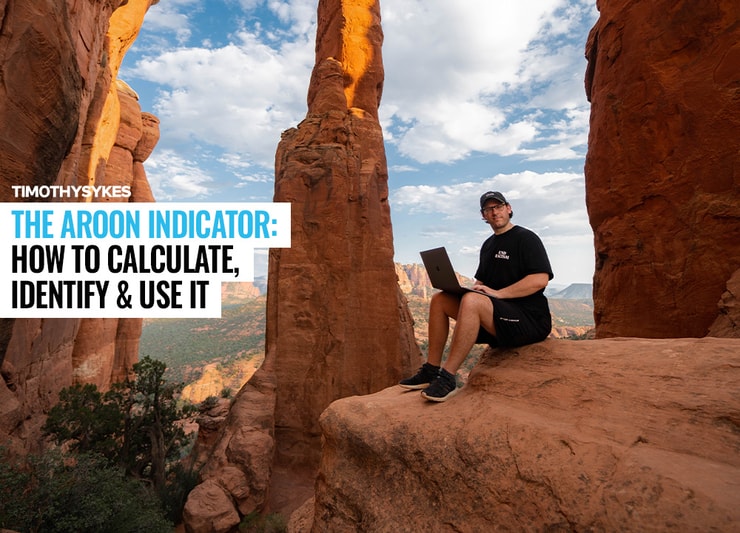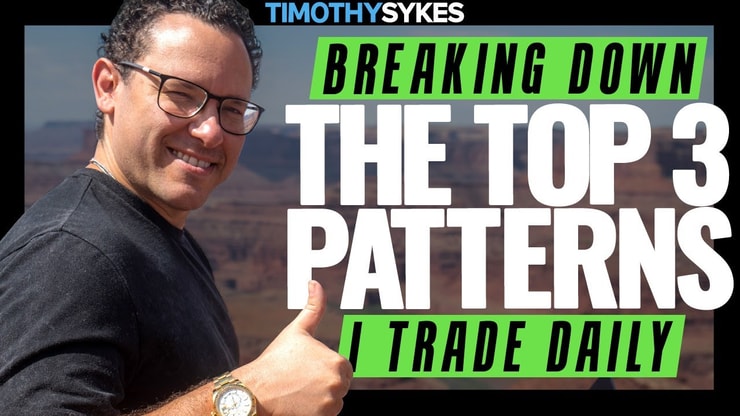The Aroon Indicator is a powerful tool in technical analysis used to identify trend changes and gauge the strength of trends. Developed by Tushar Chande in 1995, the Aroon Indicator helps traders anticipate shifts in market momentum and direction, facilitating timely decisions in a range of trading scenarios.
You should read this article because it will show how to use the Aroon Indicator for trend prediction and timing the market effectively.
I’ll answer the following questions:
- What is the Aroon indicator?
- How do you calculate the Aroon indicator?
- What are the components of the Aroon indicator?
- Can the Aroon indicator predict market reversals accurately?
- How does the Aroon indicator perform in different market conditions?
- What does the Aroon indicator tell you about price highs and correction periods?
- What role does the Aroon indicator play in stock analysis?
- How can Aroon indicator readings improve trade decisions on securities?
Let’s get to the content!
Table of Contents
- 1 What Is the Aroon?
- 2 What Does the Aroon Indicator Tell You?
- 3 What Is the Formula?
- 4 How to Use the Aroon Indicator for Trading
- 5 Best Aroon Trading Strategies
- 6 Key Takeaways
- 7 Frequently Asked Questions
- 7.1 Can the Aroon Indicator Predict Market Reversals Accurately?
- 7.2 How Does Aroon Indicator Perform in Different Market Conditions?
- 7.3 What Are the Common Misinterpretations of the Aroon Indicator?
- 7.4 How Can the Aroon Indicator Identify Market Trends?
- 7.5 What Does Aroon Tell You About Price Highs and Correction Periods?
- 7.6 How Is the Aroon Indicator Used in Asset Trading?
- 7.7 What Role Does the Aroon Indicator Play in Stock Analysis?
- 7.8 Can Aroon Indicator Readings Improve Trade Decisions on Securities?
- 7.9 How Does the Aroon Indicator Help in Security Analysis Across Different Countries?
- 7.10 What Should Be Considered When Educating About the Aroon Indicator?
- 7.11 What Are the Limitations and Types of Cases Where the Aroon Indicator Might Be Ineffective?
What Is the Aroon?

2025 Millionaire Media, LLCThe Aroon Indicator is designed to help traders predict when trends are likely to change direction and to determine how strong a trend is. The name ‘Aroon’ is derived from the Sanskrit word ‘dawn’s early light’, emphasizing its role in signaling new trends.
Components of the Aroon Indicator include:
- Aroon-Up: Measures the number of periods since a 25-period high.
- Aroon-Down: Measures the number of periods since a 25-period low.
- Aroon Oscillator: Subtracts Aroon-Down from Aroon-Up, providing a single line signal.
What Is the Difference Between Aroon and ADX?
While both Aroon and the Average Directional Index (ADX) serve to analyze trends, their focus differs significantly. Aroon is designed to signal the likelihood of a new trend emerging or an existing trend continuing, while ADX quantifies the strength of a trend.
Comparative analysis of Aroon vs. ADX includes:
- Focus: Aroon identifies when trends begin, ADX measures how strong they are.
- Calculation: Aroon looks at the time since highs and lows, ADX calculates the expanding range between highs and lows.
- Usage: Aroon is better for identifying start points, ADX excels in confirming trend strength.
The Aroon Indicator’s adaptability can be expanded by applying ADX indicator strategies to measure trend strength comprehensively. While Aroon excels in timing trend changes, ADX quantifies the strength of these trends, providing a layered analysis of market conditions. Combining these indicators allows traders to make more informed decisions on when to enter or exit trades based on confirmed trends. Explore our guide on ADX Indicator Techniques for practical insights into effectively leveraging the ADX for confirmation.
What Does the Aroon Indicator Tell You?

2025 Millionaire Media, LLCThe Aroon Indicator is particularly effective in environments where identifying the start of a trend is crucial.
Key signals provided by the Aroon Indicator:
- Trend Beginnings: Aroon-Up crossing above Aroon-Down signals potential uptrends.
- Trend Endings: Aroon-Down crossing above Aroon-Up can indicate downtrends.
- Strength of Trend: High Aroon-Up values (close to 100) suggest strong upward momentum and vice versa for Aroon-Down.
Understanding market trends is also helped by applying the concept of confluence. Confluence occurs when multiple indicators provide the same trading signal, thereby strengthening the confidence in the trade. When used alongside the Aroon Indicator, confluence can highlight robust entry and exit points, optimizing trading strategies. For a comprehensive breakdown on how to use confluence, check out our article on Utilizing Confluence in Trading.
What Is the Formula?
The formula for the Aroon Indicator helps determine the presence and strength of trends by calculating the periods since price recorded highs and lows.
How Do You Calculate It?
Calculating the Aroon Indicator involves several steps:
Identify the number of periods since the highest high and lowest low within a selected timeframe.
Calculate Aroon-Up and Aroon-Down using the formula:
- Aroon−Up = (25−periods since 25−period high) / 25 × 100
- Aroon−Down = (25−periods since 25−period low) / 25 × 100
Example: If the highest price was 5 days ago in a 25-day cycle, the Aroon-Up would be (25−5)/25×100=80.
Incorporating the Heikin Ashi technique can provide smoother price data, reducing noise and allowing clearer trend identification when combined with the Aroon Indicator. This method changes how price values are calculated and plotted, creating a cleaner chart that helps traders distinguish between trending and consolidation phases more effectively. For intel on using Heikin Ashi charts, check out our guide in the link.
How to Use the Aroon Indicator for Trading
Integrating the Aroon Indicator into trading strategies can significantly enhance decision-making processes by providing early signals of potential trend changes.
Effective integration involves:
- Combining Aroon with other indicators like moving averages and volume for confirmation.
- Observing Aroon Oscillator values to gauge the overall trend momentum.
More Breaking News
- KTOS Stock Surge: What’s Fueling the Rise?
- CAVA’s Expansion Plans Propel Stock Interest Amidst Strategic Moves
- NKE Earnings Delight: Time to Invest?
What Are the Best Aroon Indicator Settings?
The optimal settings for the Aroon Indicator can vary depending on the trader’s specific needs and the market conditions.
- Short-term trading: Faster settings like a 14-period Aroon can provide quicker signals.
- Long-term trading: A 25-period or longer Aroon may better filter out market noise and provide more reliable signals.
Best Aroon Trading Strategies

2025 Millionaire Media, LLCIncorporating the Aroon Indicator into your trading arsenal can offer distinct advantages when it comes to trend analysis and timing market entries and exits. This momentum oscillator is particularly adept at highlighting the emergence of new trends or the continuation of existing ones. Whether dealing with bullish or bearish trends, the Aroon Indicator provides clear trading signals that can guide users through complex market actions.
One effective strategy involves closely monitoring the Aroon-Up and Aroon-Down indicators. When Aroon-Up crosses above Aroon-Down significantly, it suggests an emerging bullish trend, potentially offering a strong buy signal as the price action might continue to rise. Conversely, when Aroon-Down crosses above Aroon-Up, it might signal an impending bearish move, indicating a potential sell or short position. These crossings, especially when they occur outside of consolidation phases, can signal the start of significant price moves.
The Aroon Indicator can be invaluable in identifying periods of consolidation when both Aroon-Up and Aroon-Down remain low within a trading range. This pattern often precedes a breakout, which could be either upward or downward depending on subsequent Aroon movements and other market conditions such as support and resistance levels, trendlines, and overall market sentiment. Traders should note the context in which these crossovers and consolidations occur to better understand the potential risk and to strategically place entry and exit orders.
Traders can also use the Aroon indicators to identify overbought or oversold conditions. Typically, if Aroon-Up remains high (close to 100) for an extended period, the market may be overbought, signaling a potential reversal or price correction. Similarly, a persistently high Aroon-Down might indicate an oversold market, potentially foreshadowing a bullish reversal. This insight is particularly useful in avoiding common pitfalls associated with misinterpreting market moves solely based on price action without understanding the underlying momentum and trend strength.
Combining Aroon with other technical analysis tools such as divergence, moving averages, or additional oscillators can refine these strategies, creating a robust framework for making informed trading decisions. By integrating multiple indicators, traders can confirm the signals provided by Aroon, enhancing the accuracy of their predictions and effectively managing the inherent risks of trading.
Breakout Trading Strategy
Utilizing the Aroon Indicator for breakout strategies involves:
- Identifying a consolidation range where Aroon-Up and Aroon-Down are low.
- Entering a trade when either Aroon-Up crosses 70, indicating a potential breakout upward, or Aroon-Down crosses 70, signaling a potential downward breakout.
Trend Strength Strategy
To gauge the strength of a trend using the Aroon Indicator:
- Monitor the Aroon-Up and Aroon-Down for values above 70 to confirm trend strength.
- Use these high readings as confirmation of strong uptrends or downtrends, respectively.
Key Takeaways

2025 Millionaire Media, LLC- The Aroon Indicator helps traders identify when trends might start and how strong they are.
- It is crucial to combine Aroon with other technical analysis tools for best results.
- Understanding the settings and proper calculations of Aroon can optimize its use in various trading scenarios.
- Aroon is invaluable for identifying trend strengths and potential breakouts.
Trading isn’t rocket science. It’s a skill you build and work on like any other. Trading has changed my life, and I think this way of life should be open to more people…
I’ve built my Trading Challenge to pass on the things I had to learn for myself. It’s the kind of community that I wish I had when I was starting out.
We don’t accept everyone. If you’re up for the challenge — I want to hear from you.
Apply to the Trading Challenge here.
Trading is a battlefield. The more knowledge you have, the better prepared you’ll be.
Is the Aroon Indicator part of your trading toolkit? Write “I’ll keep it simple Tim!” in the comments if you picked up on my trading philosophy!
Frequently Asked Questions
Can the Aroon Indicator Predict Market Reversals Accurately?
While the Aroon Indicator is adept at signaling the start of trends, its effectiveness at predicting market reversals can vary. It should be used in conjunction with other indicators to confirm potential reversals.
How Does Aroon Indicator Perform in Different Market Conditions?
The Aroon Indicator performs well in markets where clear trends are present but may provide less reliable signals in sideways or consolidating markets. Traders should adjust their strategies accordingly and use additional analysis to confirm signals provided by Aroon.
What Are the Common Misinterpretations of the Aroon Indicator?
Common misconceptions about the Aroon Indicator include mistaking temporary crossovers as confirmations of trend reversals, and over-relying on Aroon without additional confirmatory signals from other technical tools.
How Can the Aroon Indicator Identify Market Trends?
The Aroon Indicator uses the Aroon up and Aroon down metrics formulated to signal potential trends in the prices of stocks or securities. These signals help traders gauge whether a stock is entering a trend, whether up or down.
What Does Aroon Tell You About Price Highs and Correction Periods?
By analyzing the price highs and correction periods through Aroon formulas, investors can determine the strength of the current market trend and anticipate potential reversals or continue in asset prices.
How Is the Aroon Indicator Used in Asset Trading?
Traders utilize the Aroon Indicator to understand the price trend and momentum of assets and securities. It provides insights on optimal positions to enter or exit trades, enhancing trade strategy on a technical basis.
What Role Does the Aroon Indicator Play in Stock Analysis?
In stock analysis, the Aroon Indicator helps identify when stocks are likely to start a new trend or if a current trend is ending. This is crucial for making informed trading decisions based on price movements and trade signals.
Can Aroon Indicator Readings Improve Trade Decisions on Securities?
Yes, readings from the Aroon Indicator can significantly improve trade decisions by highlighting the strengths and potential turnaround times of securities’ price trends, aiding in more strategic positions and trades management.
How Does the Aroon Indicator Help in Security Analysis Across Different Countries?
The Aroon Indicator can be applied to securities globally, offering insights that transcend specific country markets. By analyzing the ‘middle’ points and ‘opposite’ trends in security prices, investors can make more informed decisions. This sense of market movement is crucial for portfolio diversification and risk management across different countries.
What Should Be Considered When Educating About the Aroon Indicator?
Education on the Aroon Indicator should include a comprehensive description of its parts and how they interact with each other. Articles and educational links often provide tips and advice on interpreting Aroon’s readings in various market conditions. Understanding the legal implications and case studies related to the indicator’s use can further enhance learning outcomes.
What Are the Limitations and Types of Cases Where the Aroon Indicator Might Be Ineffective?
The Aroon Indicator may have limitations in cases where the market type does not exhibit clear trends or is highly volatile. In such scenarios, the indicator’s typical scale and parts might not conclude the actual market movement accurately. Investors should consider these potential shortcomings as part of their overall strategy and look for additional resources or alternative indicators to supplement their analysis.












Leave a reply